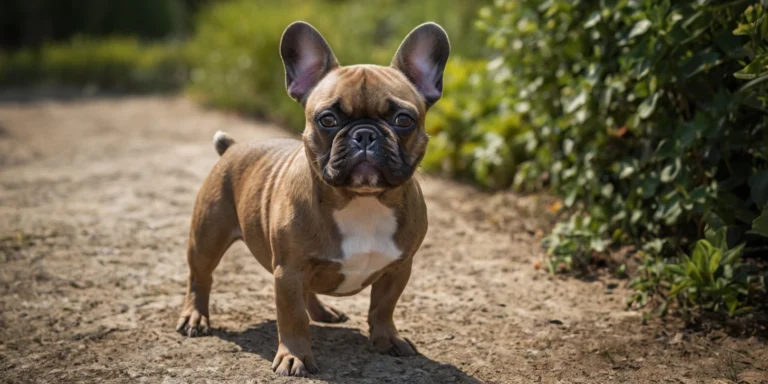Mini Goldendoodle Full Grown: Size, Care & Traits in 2025
Mini Goldendoodles are a top pick in 2025, charming dog lovers with their fluffy coats and friendly vibes. But what can you expect when these adorable puppies become full-grown adults? A cross between a Golden Retriever and a Miniature Poodle, full-grown Mini Goldendoodles are compact, lovable companions ideal for various lifestyles. Whether you’re curious about their size, personality, or care needs, this guide covers it all. From grooming and health to training and adoption tips, here’s everything you need to know about a Mini Goldendoodle full grown in 2025. Let’s get started!
What Is a Full-Grown Mini Goldendoodle?
A Mini Goldendoodle Full Grown is a designer breed blending the Golden Retriever’s warmth with the Miniature Poodle’s smarts and low-shedding coat. When full grown, typically by 12–18 months, these dogs reach a small, manageable size perfect for apartments or cozy homes. Unlike Standard Goldendoodles, which can hit 90 pounds, Mini Goldendoodles stay petite and easy to handle.
Mini Goldendoodle Adult Traits
Their traits vary by generation, like F1 (50% Golden Retriever, 50% Poodle) or F1B (75% Poodle, 25% Golden Retriever). F1B adults often have curlier, more hypoallergenic coats, while F1 dogs may sport wavier fur. As adults, their puppy energy calms slightly, but they stay playful and eager to please.
Why Choose a Mini Goldendoodle Full Grown?
Owning a full-grown Mini Goldendoodle is a delight, but it comes with responsibilities. Here’s what makes them special and what to consider before bringing one home.
Benefits of Adult Mini Goldendoodles
Challenges of Mini Goldendoodles Adult
How to Care for a Mini Goldendoodle Full Grown in 2025
Keeping your adult Mini Goldendoodle healthy and happy requires a consistent routine. Here’s how to ensure they thrive as adults.
Best Diet for Adult Mini Goldendoodles
A balanced diet supports your dog’s health. Adults need 1–2.5 cups of high-quality kibble daily, split into two meals, based on weight and activity level. Choose foods with protein like chicken or salmon, avoiding fillers like corn or soy.
- Tip: Consult your vet to adjust portions, especially for spayed/neutered dogs with slower metabolisms.
- Hydration: Provide 1 ounce of water per pound of body weight daily (e.g., 20 ounces for a 20-pound dog). Watch for excessive drinking, which may indicate issues.
Exercise Needs for Full Grown Mini Goldendoodles
Full-grown Mini Goldendoodles are energetic, needing 30–60 minutes of daily activity like brisk walks, fetch, or agility games. Their sharp minds also require mental challenges to prevent boredom, which can lead to chewing or barking.
- Activity Ideas: Enjoy hikes, fetch, or dog park visits. Puzzle toys keep them engaged.
- Mental Stimulation: Teach new tricks or use treat-dispensing toys for brain exercise.
Grooming Tips for Mini Goldendoodle Coats
Their low-shedding coats need care to stay soft and mat-free. Brush 2–3 times weekly and book professional grooming every 6–8 weeks for trims and hygiene. Clean their floppy ears weekly to prevent infections, common in Poodle mixes.
- Tools: Use a slicker brush, metal comb, and pet-safe shampoo for sensitive skin.
- Nail Care: Trim nails every 3–4 weeks to avoid discomfort or scratches.
Health Care for Adult Mini Goldendoodles
These Dogs are generally healthy but may inherit issues like hip dysplasia, progressive retinal atrophy, or ear infections. Schedule annual vet visits for adults and biannual visits for dogs over 7 years. Spaying/neutering, often done at 6–8 months, can reduce health risks, but check with your vet.
- Prevention: Regular dental cleanings, flea/tick protection, and heartworm meds are essential.
- Insurance: Pet insurance can offset vet costs, but review plans carefully.
Training Tips for Adult Mini Goldendoodles
By adulthood, Mini Goldendoodles are highly trainable due to their intelligence and eagerness to please. If trained as puppies, they’ll know basics, but ongoing practice keeps them sharp.
- Command Review: Reinforce “sit,” “stay,” “come,” and “leave it” for good behavior.
- Advanced Skills: Explore agility or therapy dog training, where they excel.
- Behavior Fixes: Address separation anxiety with gradual alone-time training or calming toys.
Finding a Mini Goldendoodle Full Grown in 2025
If you want a Mini Goldendoodle full grown, you can adopt an adult or buy a puppy to raise. Reputable breeders charge $2,500–$5,000 for puppies and offer:
- Health clearances for hip dysplasia or eye issues.
- Puppies raised in loving, social environments.
- Transparency about parent dogs and care.
Avoid breeders with prices under $1,000, as they may signal unethical practices leading to health or behavioral issues. Adopting an adult Mini Goldendoodle from a shelter or rescue is a great alternative, as many need homes due to owners’ life changes.
Mini Goldendoodle vs. Other Doodle Breeds Full Grown
How does a full-grown Mini Goldendoodle compare to other doodles?
- Vs. Labradoodle: Labradoodles may be more energetic and shed more, while Minis are smaller and gentler with kids.
- Vs. Micro Goldendoodle: Micros (5–15 pounds) are tinier and more delicate, needing extra care compared to Minis.
Final Thoughts
Mini Goldendoodle full grown is a wonderful blend of charm, intelligence, and affection, making them a favorite for dog lovers in 2025. Their small size, low-shedding coat, and adaptable personality suit many homes, but they need exercise, grooming, and care to shine. Whether you adopt an adult or raise a puppy, your Mini Goldendoodle will bring joy for years.
Ready to find your Mini Goldendoodle? Check out reputable breeders or local rescues to meet your new best friend. Drop your questions or stories in the comments we’d love to connect!







